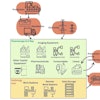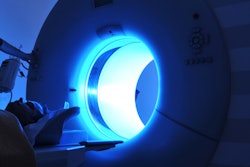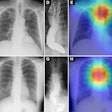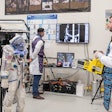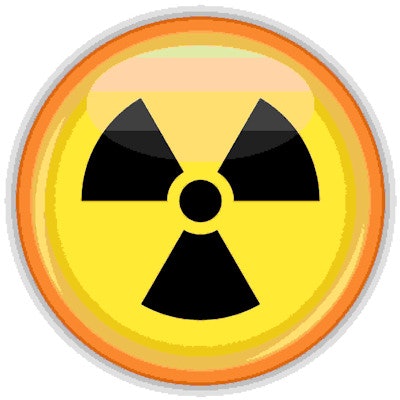
Fluoroscopically guided interventional radiology procedures offer an effective way to diagnose and treat serious medical conditions, but they also confer high doses of radiation, according to a study published online June 6 in the American Journal of Roentgenology.
That's why it's important for clinicians to take seriously radiation exposure to patients from fluoroscopic interventional procedures, wrote a team led by Xinhua Li, PhD, of Massachusetts General Hospital (MGH) in Boston. Li's group also included senior author Madan Rehani, PhD, chair of MGH's radiation safety committee.
"Although the benefits of successful diagnosis and therapeutic treatment largely outweigh the ... risks in the palliative care of patients under serious trauma or illness, all risks, including radiation risk associated with [fluoroscopy-guided] procedures, warrant continued attention," the authors wrote.
X-ray fluoroscopy is commonly used to guide diagnostic studies as well as treatment, the group noted. But these procedures can impart high doses of radiation -- up to 524 mSv, according to the team.
Li and colleagues sought to explore the medical condition of patients who received a cumulative effective radiation dose at or above 100 mSv from fluoroscopy-guided interventional procedures over nine years. They assessed 25,253 patients who underwent these procedures between January 2010 and January 2019; the final study cohort consisted of 1,011 patients who each received a cumulative effective dose of 100 mSv or more (4%); median value was 177.2 mSv.
Patients with a cumulative effective radiation dose of 100 mSv or greater were treated for the following six types of medical disorders: cancer (36.7%), chronic disease in the torso (30%), internal bleeding (24.8%), trauma (4.6%), organ transplant (3.2%), and cerebrovascular disease (0.7%).
| Medical disorders experienced by patients treated with fluoroscopy-guided interventional procedures | ||
| Disorder | Number of patients | Number of procedures |
| Cancer | 371 | 1,096 |
| Chronic disease of the torso | 303 | 794 |
| Internal bleeding | 251 | 501 |
| Organ transplant | 32 | 165 |
| Trauma | 47 | 102 |
| Cerebrovascular disease | 7 | 25 |
| Overall | 1,011 | 2,683 |
Of the patients who were exposed to radiation doses of 100 mSv or greater, the most common cancer that prompted fluoroscopy-guided interventional was liver cancer (50.9%), followed by intestinal cancer (14%), then cancer of the gallbladder and bile duct and melanoma (both 5.4%).
When it comes to patient care, the benefits of fluoroscopic intervention for diagnosis and treatment of disease can't be denied. But it is important to consider radiation dose, according to the team.
"The data suggest that substantial radiographic dose may be used in the critical care of a sizeable fraction (4%) of patients with serious medical disorders," Li and colleagues concluded. "The potential radiation risks associated with these procedures [deserve further consideration]."



